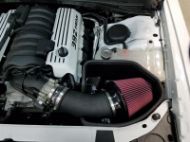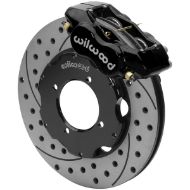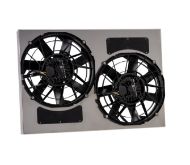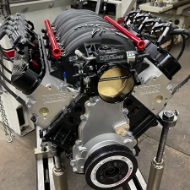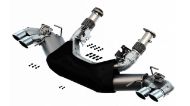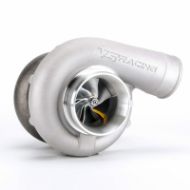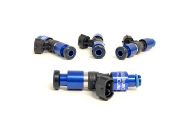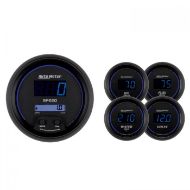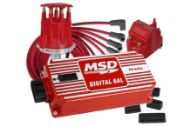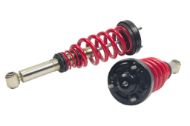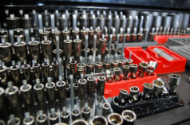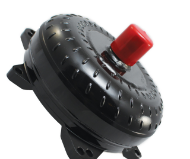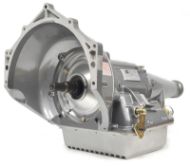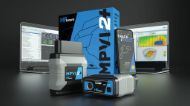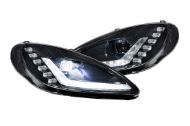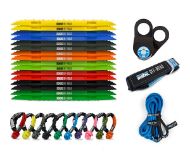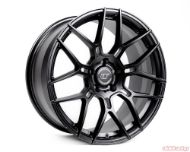Source: Power Tank
Lately there seems to be more and more hype about nitrogen gas for tires offered by tire companies and nitrogen services. Some services will "purge" your tires of air and replace it with near pure nitrogen for $20 per tire. Some tire shops are charging as much as $5 -10 per tire to fill them with nitrogen claiming everything from improved fuel mileage to a more comfortable ride. Is there any truth to this?
Here we will take a close look at some facts and let you make up your own mind. We have three articles here which support our own findings. One is from consumer reports (click here), one from Edmunds (click here), and the last comes from A Hot Cup of Joe (click here). At the bottom of this page we show the results of our own real-world gas comparison test that you might find interesting. On this page, we refer to "gas" which includes air, nitrogen, and CO2.
THE GAS TEST
Ideal Gas Law Formula Shmormula. I wanted to see for myself what different pressure changes I would see between N2, "air", and CO2 so I came up with my own test. I decided I could not use tires for comparison testing because of the numerous potential variables like stem leaks, bead seals, tread damage, flaws in the rubber, etc. I also wanted to test the gases in the most extreme temperature range as possible, as quickly as possible so fitting the gases in the freezer would also be a plus. Instead of tires I used high pressure aluminum bottles fitted with a valve and a pressure gauge. All were leak-tested at 600 PSI to ensure a leak-free test vessel. I did two tests; one at a low pressure representing normal car or light truck tire pressures and the second at a high pressure representing RV and tractor tire pressures. My findings are nearly identical to a pressure calculator created by Martin Shmaltz of Boston University Physics department (found here). The calculator can be found by clicking here (note how there is no input for gas type). Here are my results:
LOW PRESSURE TEST

Figure 1 - I used an infra red surface thermometer to measure bottle temperatures. Each bottle was allowed to stabilize to temperature for at least three hours to ensure that the gas temperature was the same as the surface temperature. Our freezer got our bottles down to -11ºF in this test for a good starting temperature.

Figure 2 - This photo shows the three bottles fresh out of the freezer at -11 degrees F and all with a starting pressure of 40 psi. Almost immediately after removal from the freezer the bottles started to frost up on the surface. Each bottle is marked with its gas contents (CO2, N2, Air).

Figure 3 - Our shop temperature was 88ºF so this became our next test temperature. All bottles were allowed to stabilize at this temperature for at least three hours. As you can see the pressure on the gauges of all of the bottles is virtually identical at 52 PSI. So far all of the gases have increased in temperature by 99ºF and in pressure by 12 PSI.

Figure 4 - We found out that if you stick a black aluminum bottle on top of a steel car hauler in the afternoon sun for a few hours you can get some damn hot bottles. You are seeing a bottle temperature of 117.3ºF

Figure 5 - At 117degrees F, our gauges show a near identical pressure on all of them at ~57 PSI. Note: The "air" bottle gauge seems to show a higher pressure than the other gauges This is due partly to the angle of the camera to the gauge pointer. All gauges showed pressures within 1 PSI of each other.
CONCLUSION FROM LOW PRESSURE TEST:
Through a 128ºF temperature swing from -11ºF to 117ºF all gas samples showed virtually an identical pressure increase of 17 PSI from 40 PSI to 57 PSI. For an automotive tire this temperature delta represents an extreme real-life case but it shows that the Ideal Gas Law formula does apply to these gases and when it comes to thermal pressure stability none has any apparent advantage over the other.
HIGH PRESSURE TEST
As gas pressures move further away from atmosphere (14.6 PSI) the Ideal Gas Law becomes less accurate. So how would the gases react to temperature at the high tire pressure range such as those found on RVs and tractor trailers?

Figure 1 - Weeks separated our two tests and surprisingly when we checked the start temperature of the bottles for high pressure test it was at a super cold 20 degrees below zero F. All the better. These bottles all started at 80 PSI

Figure 2 - The bottles were left in the freezer for days before they were removed for our test to ensure they were all leak-free .

Figure 3 - The bottles were removed from the freezer and within seconds in the warm mid day heat our bottles began to frost up and then thaw out.

Figure 4 - One odd phenomenon that I noticed was how each bottle seemed to thaw out differently. The N2 (left) thawed from the bottom first similar to the air (right) while the CO2 (center) seemed to thaw quickly and evenly.

Figure 5 - Within three minutes out of the freezer in 90ºF ambient temperature our bottles' surface temperature had gone from -20F to over 40F and continued to climb at a rapid pace. Outside temperature is over 100* in the shade here. Bottle pressures at this moment all show approximately 95 PSI.

Figure 6 - Once our bottles had warmed up to near ambient temperatures I brought them into our air conditioned office and allowed them to stabilize to the office temperature of 75 degrees F.

Figure 7 - At 75 degrees F. So far the bottles have gained 95 degrees (-20 to 75) and all show an identical pressure of 100 PSI, an increase of 21 PSI.

Figure 8 - It's 101F in the shade and our bottles are now temperature stabilized.

Figure 9 - In the 101˚F temperature (121˚F increase) the gauges showed a difference of about 2 PSI. (Pressures: N2-103 PSI, CO2-105 PSI, AIR- 103 PSI).


Figure 10 - Hot, hot, hot. Afternoon sun + steel deck = 134 *F! After a couple hours in the hot sun our thermometer showed a bottle temperature of 134*F. This is hotter than your tires should ever get but if they did your tire pressure would be virtually the same whether you had them filled with N2, CO2, or air. (Pressures: N2-108 PSI, CO2-110 PSI, AIR-108 PSI).
Conclusion of High Pressure Gas Test:
At the higher tire pressure commonly seen in RV tires we took the gases through a temperature range of 154ºF (-20ºF up to 134ºF). Our start pressure was 80 PSI @ -20ºF and over the 154ºF temperature increase we saw the gas pressures all increase virtually the same amount to within 2 PSI of each other. In the end, the N2 and "air" test samples topped at 108 PSI while the CO2 sample topped out at 110 PSI. Note that the pressure changes that we saw in our bottles are the same as what you'd experience in your big RV tires despite the difference in volume. What does this mean? No matter which of these gases is in your RV tires, your handling, performance and tire wear will be the same.
THE IDEAL GAS LAW FORMULA might help explain why different gases expand at virtually the same rate as their temperature increases.
A gas may be completely described by its makeup, pressure, temperature, and volume. Where P is the pressure, V is the volume, n is the number of mols of gas, T is the absolute temperature, and R is the Universal Gas Constant,
Ideal Gas Law: PV = nRT
This formula is the "Ideal Gas Law Formula." Although there is no such thing as an ideal gas the formula is pretty accurate for N2, CO2, and oxygen as we assume that the gas molecules are point masses and the collisions of the molecules are totally elastic. (A completely elastic collision means that the energy of the molecules before a collision equals the energy of the molecules after a collision, or, to put it another way, there is no attraction among the molecules.) The formula becomes less accurate as the gas becomes very compressed and as the temperature decreases but here "very compressed" pressures are well above even the highest tire pressures and "decreased temperatures" are extremely cold, too cold for tires. There are some correction factors for both of these factors for each gas to convert it to a Real Gas Law Formula, but the Ideal Gas Law is a good estimation of the way N2, CO2 and "air" should react through temperature changes. What does all this mean? It simply means that "air", nitrogen vapor, and CO2 vapor should all react pretty much the same within normal tire pressures (0-120 PSI) and temperatures.

